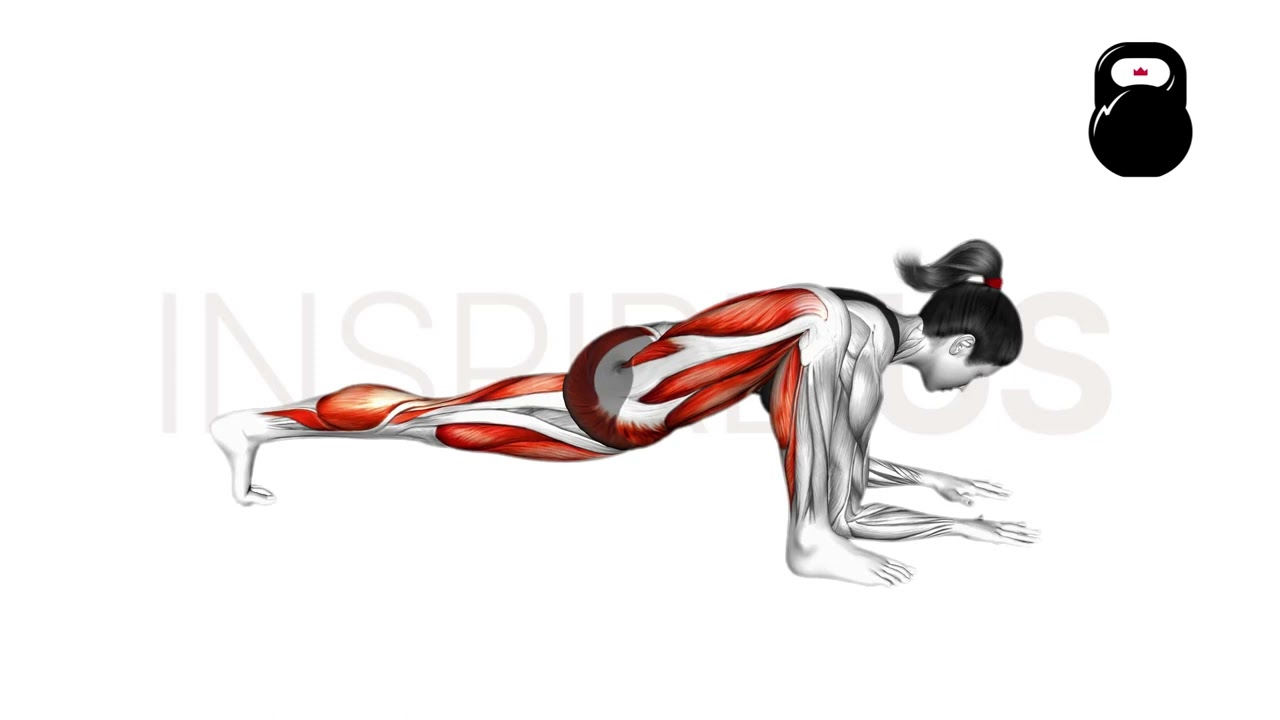Lizard Stretch (Easy Variation): Benefits, Muscles Targeted, and More
Few stretches target both the anterior and posterior muscles of the lower body as well as the lizard stretch.
Otherwise referred to as the “lizard pose” due to its origin within yoga poses, the lizard stretch involves entering a forward lunge pose while the upper body is supported by the hands atop the floor.
However, due to the difficulty in performing this exercise, many may opt for the easier variation where the arms are elevated upwards. Rest assured, even if less difficult, the easy variation of the lizard stretch is nonetheless still quite effective.
What is the Lizard Stretch?
The lizard stretch (AKA lizard pose, gecko pose or Utthan Pristhasana) is classified as an active static compound stretch traditionally performed in the art of yoga as a method of “opening” the hips.
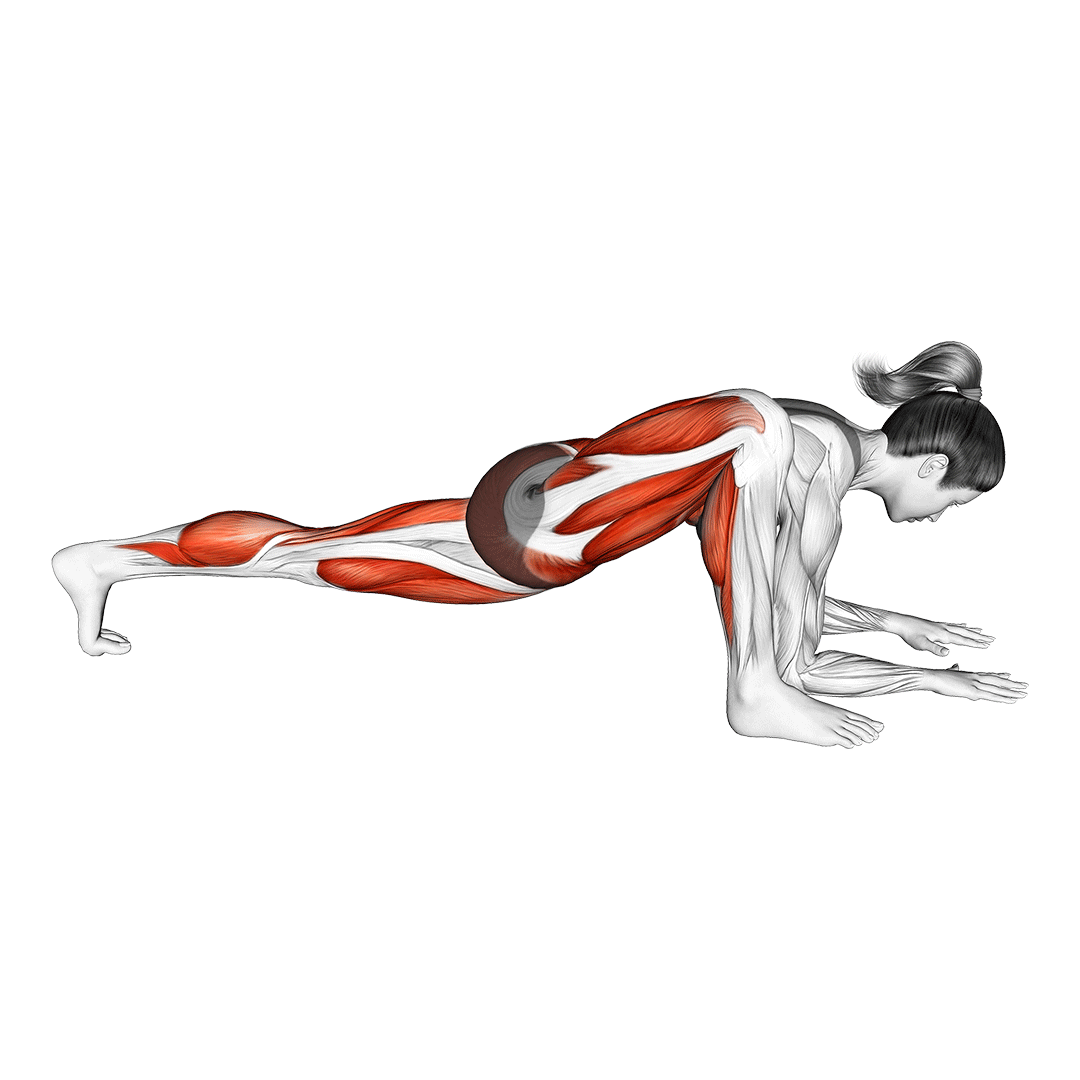
In close examination of the structures and mechanics involved, we can determine that the pose primarily stretches the structures of the lower body - especially those nearest the pelvis, such as the hip flexors and lower posterior muscles.
However, as mentioned at the start of this article, the traditional variation of the lizard stretch can be difficult for individuals of only average mobility or those that have no experience with yoga. As such, this article primarily centers around the easier variation involving less demand at the hips and lower back.
Is the Lizard Stretch Right for You?
Depending on your current level of mobility, the easier version of the lizard pose may be exactly the sort of stretch you need.
If you are a flexible but otherwise sedentary individual who regularly remains seated for extended periods - or are a yoga practitioner wishing to transition to more advanced hip-focused poses, then the lizard stretch is the right move for you.
Note that because this article concerns the easier form of lizard pose, it may also be too easy if you are already quite flexible. In such cases, entering poses like the pigeon pose or monkey pose may present a better challenge.
How to do the Lizard Pose
To perform the easy variation of the lizard stretch, the exerciser will first position themselves in a modified downward dog pose.
To do so, set hands and feet on the floor with the hips raised into the air, forming a triangular shape with the entire body.
A platform, exercise ball or yoga block should be placed behind the hands so as to later elevate the arms higher off the floor and make the subsequent steps easier.
From this stance, the exerciser will step one foot forwards until it is approximately parallel to the side of the hand on the same side. The knee should be bent with the toes pointing forwards.
With one leg crouched forwards in this way, the exerciser will slowly lower their forearms towards the floor - bending at the elbows until the forearms are flat along the platform or block supporting the hands.
With the thigh now around parallel to the sides of the torso, the head in a neutral position and the forearms parallel to the ground atop the platform, the exerciser holds this position for up to thirty seconds before switching to the opposite leg.
The original version of the lizard pose eliminates the use of an elevated platform and instead has the exerciser set their forearms flat on the ground. This will require a deeper stretch of the pelvis, knees and back - but is ultimately more effective as a stretch as well.
What Muscles and Joints are Worked by the Lizard Pose?
The main beneficiary of the lizard pose is the inner section of the thighs.
This includes the semimembranosus, the sartorius, the adductor magnus, the gracilis, the rectus femoris, the pectineus and the psoas. Of course, the subsequent tendons affixing these muscles to the bones of the pelvis, femur and shins are also stretched.
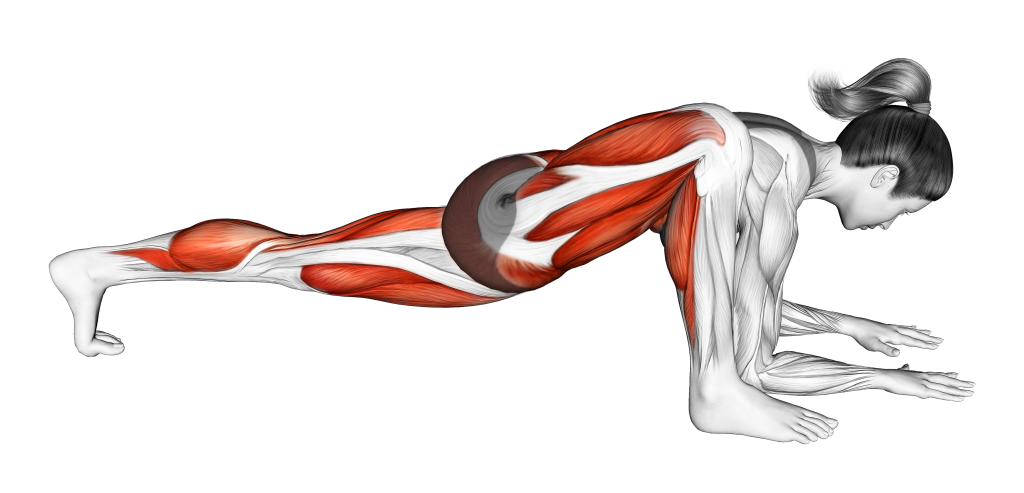
In terms of joints involved, the lizard pose makes use of knee flexion, hip flexion, elbow flexion, ankle dorsiflexion and a mild level of leg abduction, if performing the stretch to its greatest ROM.
Remember that many of these targeted bodily structures are affected only within certain ranges. Because of how difficult the lizard stretch can be, individuals with poor mobility may not be able to fully work all of the aforementioned muscles, tendons or joints. In such cases, selecting an easier stretch may be more beneficial.
What are the Benefits of Doing the Lizard Stretch?
With the challenge of the lizard stretch also comes excellent benefits - especially for those with issues relating to their hips and hamstrings. We’ve listed them below.
Excellent for Hip Mobility and Strength
The lizard stretch is not just for improving the flexibility of the hamstrings.
When performed as a mobility exercise, it can greatly improve hip flexibility, strengthen the muscles related to hip flexion and leg movement, as well as reduce the risk of future injury in relation to such structures.
For the best results, aim to lightly engage the glutes while in the deepest point of the stretch. This will push the hips even further forwards, stretching the hip flexors and hamstrings to a greater degree.
Reinforces a Large Number of Different Biomechanics
The lizard stretch is complex in technique, requiring multiple moving joints in a slow and simultaneous movement pattern. The most dynamic of these relates to the knees and hips, both of which are highly susceptible to poor stability and limited mobility in sedentary individuals.
Fortunately, performing the lizard stretch and other compound stretches like it can help reinforce the body’s capacity to move in a variety of manners - ensuring joints are properly mobile and that the performer can make full use of their body.
Occasionally Used for Hip Pain, Lower Back Pain or Compression-Related Sciatica
Although not necessarily a piriformis-targeted stretch, the lizard stretch can help correct symptoms of pain and discomfort throughout the lower body.
This is especially true for individuals with lower back pain as a result of inflexible hip flexors, which can alter pelvis orientation and strain the muscles found in the back.
Of course, prior to using the lizard stretch for any of these purposes, remember to first seek out approval from a medical professional. Sciatica in particular will require different rehabilitation exercises than what may be used for lower back pain or hip pain.
Acts as an Entry to Advanced Yoga Poses and Mobility Exercises
Whether speaking of its easier variation or a full lizard pose, either exercise is excellent as an entry to performing more advanced hip opening stretches. Movements like the aforementioned monkey pose and advanced mobility movements like the supine bent hurdler’s stretch both take facets from the lizard stretch to produce their benefits.
When the lizard pose is no longer a challenge for you to perform, try out more complex and intense variations to further drive your flexibility.
Excellent for Hurdlers, Long-Jumpers and Athletes of Similar Movement Demands
Quite a number of athletic disciplines place great emphasis on the hips and hamstrings.
In particular are those that require a wide distance between the legs, such as what one would encounter when a hurdler leaps over an obstacle or a gymnast lowers into a split pose.
Both movements can be limited by poor hip mobility and weakness in the hip flexors or hamstrings - issues that are immediately addressed when performing the lizard stretch.
Common Lizard Stretch Mistakes
In order to perform the lizard stretch without potentially injuring yourself, avoid the following common mistakes.
Dropping Into the Full Stretch
Like most other yoga poses, the lizard pose is meant to be performed in a slow and relaxed manner.
Rapidly dropping the torso towards the floor so as to set the forearms can cause strain to the lower back and pelvis, as well as reduce the effectiveness of the stretch as a whole.
Of course, this goes for any point during the stretch, not only when lowering the forearms. Avoid dropping into the starting pose from downward dog, as well as explosively driving the leg forwards.
Overstretching or Performing the Pose With Insufficient Mobility
The lizard pose - even in its easy form - is not suitable for first-timers.
Performing the stretch to an excessive degree or when your body is entirely unprepared can lead to injury and a generally ineffective stretch as a whole.
As a general rule, avoid performing the lizard stretch if you have a history of injuries to the lower body, back or if you have no experience performing mobility exercises.
Rounding the Lower Back
Throughout the entire pose from downward dog to the final position, the lower back should remain flat and the spine in a neutral curvature so as to reduce the risk of injury. Ensure the core is lightly braced and that the glutes are kept sticking outwards to further protect the back.
Not Stepping Forwards Enough
During the mid-point of the stretch where one foot is stepped towards the hands, it is important to ensure that the foot is stepped far enough forwards. This will ensure that the hamstrings, hip flexors and glutes are lengthened as much as possible and will aid with maintaining balance as the pose is held.
Alternatives to the Lizard Stretch
If the lizard stretch doesn’t quite fit into your mobility routine, try the following alternative stretches out.
Downward Dog Stretch/Pose
The downward dog stretch is a predecessor to the lizard stretch among yoga poses, featuring less of a challenge to the hips and back while achieving a similar movement pattern.
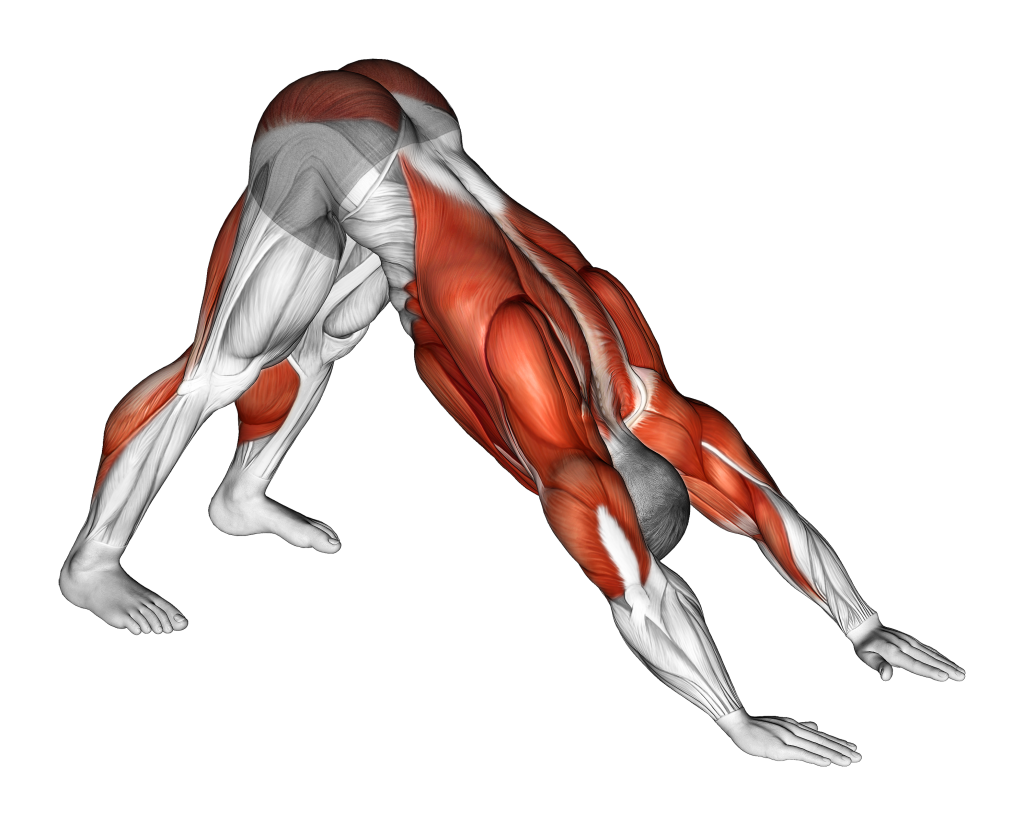
If you have difficulty performing the lizard stretch due to insufficient mobility or because of the complexity of its form, then the downward dog pose is excellent as a progression to the former pose. That, or if you wish to place a greater stretching effect on the muscles of the lower back.
Pigeon Stretch/Pose
The pigeon stretch is yet another yoga pose that targets the muscles of the lower posterior chain and those of the hip flexors.
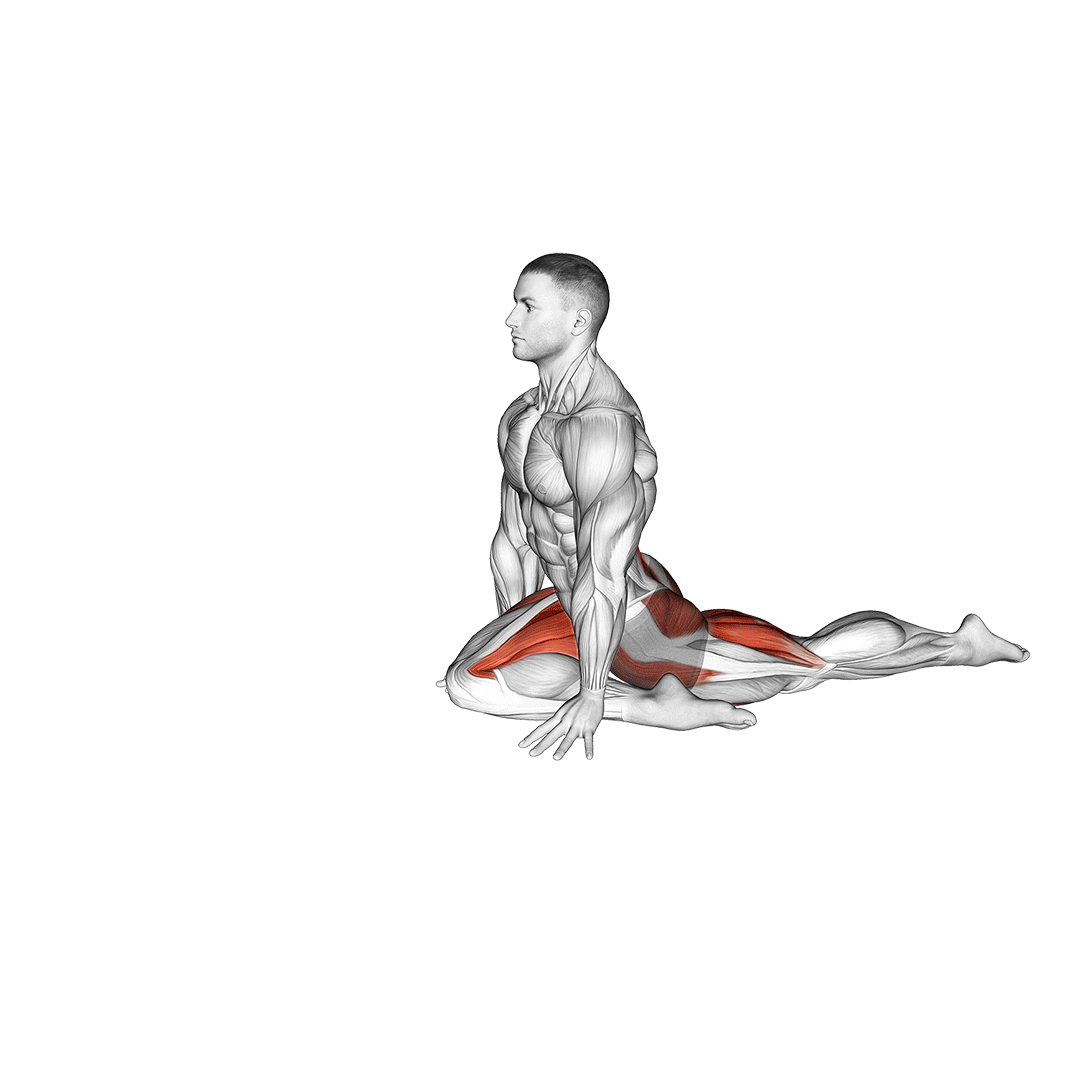
Rather than beginning in the downward dog pose, the pigeon pose will have the exerciser bend one leg at their front, with the other extended behind them. From this position, they bend forward at the hips, placing the bent leg between their stomach and the floor.
This creates a greater emphasis on the glutes than would be seen with the lizard stretch, and is otherwise less technically complex but similarly effective as a mobility exercise.
Flying Lizard Pose or Hurdler Pose
The flying lizard or hurdler pose is an advanced form of lizard pose where the performer suspends themselves solely from their hands, as if performing a planche exercise.
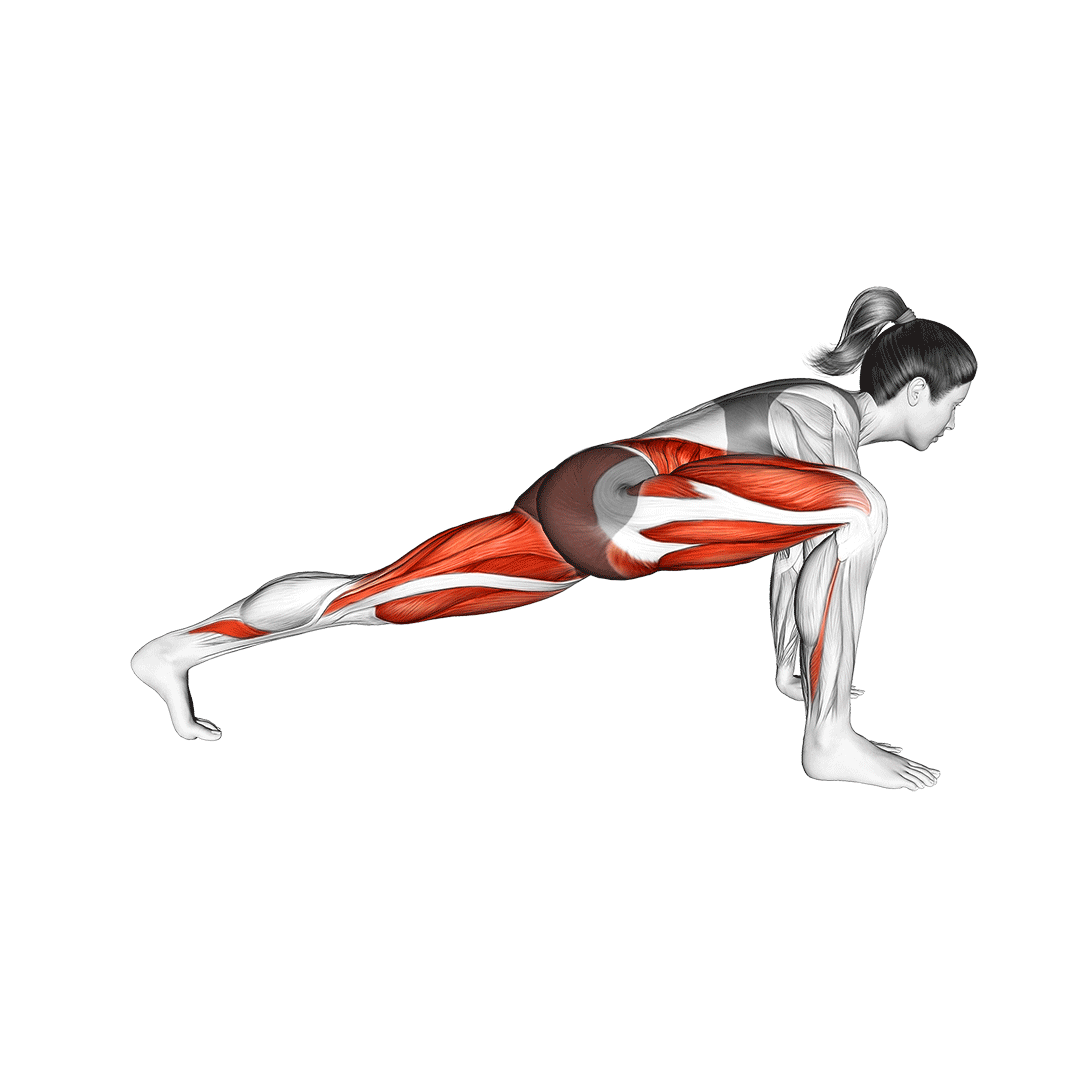
With the body suspended over the hands, the exerciser extends one leg backwards into the air and the other out to the side. This greatly strengthens the core, deltoids, chest and triceps brachii muscles.
Once you have mastered the lizard stretch, the flying lizard pose can act as the next progression step if you wish to further maximize your bodily control and mobility.
Frequently Asked Questions (FAQ)
Why is the Lizard Pose so Hard?
The lizard pose is hard due to the inherently high level of mobility it demands of the body. Rest assured, with regular mobility work and some practice, the lizard pose can be performed by just about any healthy individual.
What is the Lizard Pose Called?
The lizard pose is referred to as “Utthan Pristhasana” in Sanskrit. This roughly translates to “stretching out like the page of a book pose” in English.
What are the Contraindications (Risk Factors) for the Lizard Pose?
The lizard pose may not be the right movement for you if you currently have (or have a history of) injuries to the hips, knees, ankles, shoulder joint, elbows, wrists or spine. This is especially relevant in regards to poor hip or shoulder integrity, as both are rotated quite significantly during the movement.
In Summary
The lizard stretch/pose is an excellent inclusion into any advanced mobility drill. When performed correctly, it can help relieve tight hips, improve lower body function and relieve muscular tension and soreness throughout much of the body.
Remember that if the conventional lizard pose is too easy for you, elevating the forearms so as to perform the easier variation is entirely fine. In fact, it may be more advisable, depending on just how inflexible your hips may be.
Remember to speak to a medical professional prior to attempting any sort of physically-demanding stretch with a history of injuries.
References
1. Stephens, Mark. Teaching Yoga: Essential Foundations and Techniques. United States: North Atlantic Books, 2011. ISBN: 9781583944721, 1583944729
2. Wikipedia contributors, "Downward Dog Pose," Wikipedia, The Free Encyclopedia, https://en.wikipedia.org/w/index.php?title=Downward_Dog_Pose&oldid=1169629358 (accessed September 12, 2023).
3. Xiao J, Sun J, Gao J, Wang H, Yang X. The Activity of Surface Electromyographic Signal of Selected Muscles during Classic Rehabilitation Exercise. Rehabil Res Pract. 2016;2016:4796875. doi: 10.1155/2016/4796875. Epub 2016 Apr 19. PMID: 27195151; PMCID: PMC4853948.

